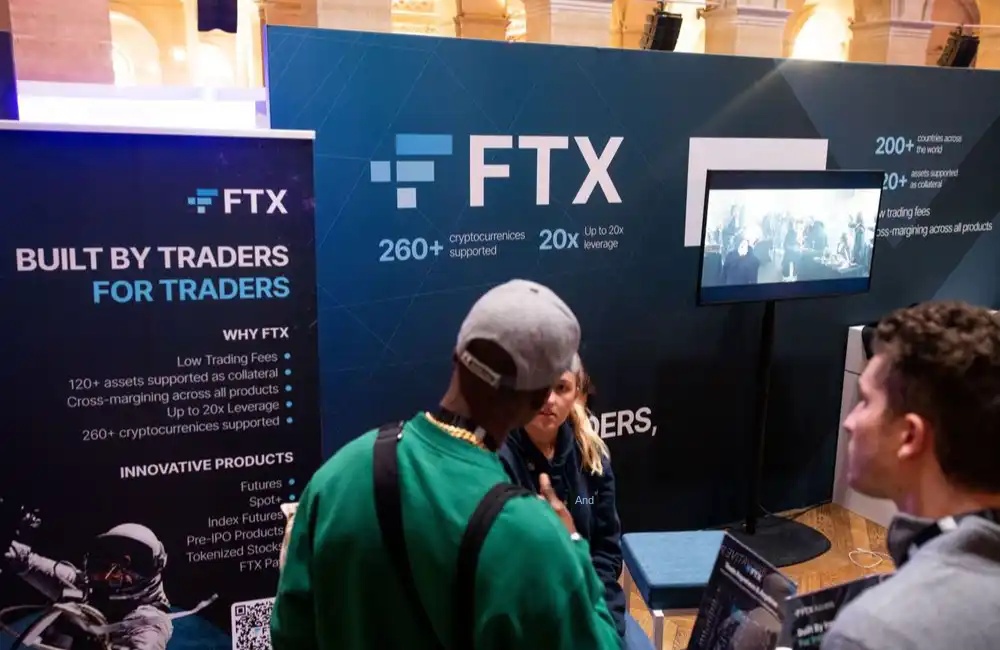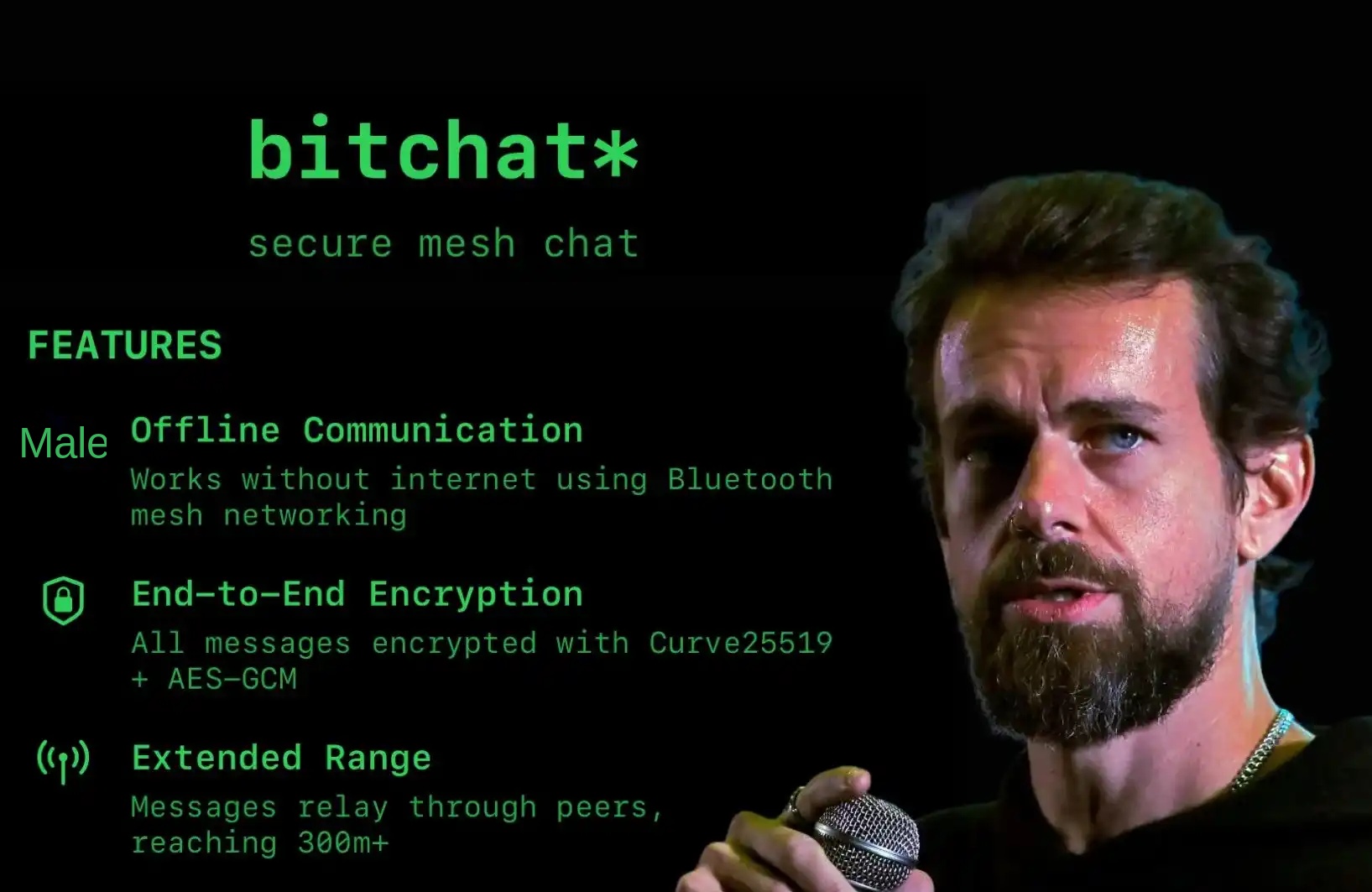Bitcoin Magazine: Bitcoin Treasury Company Is a Bubble, Strategy Will Eventually Fall Below Net Asset Value Per Share
Original Article Title: Bitcoin Treasury Companies Are Bubbles
Original Article Author: Emil Sandstedt
Original Article Translation: TechFlow TechFlow
It has been six months since I first published a report on what was then known as MicroStrategy (now renamed Strategy) company. In addition to changing its name, the company has expanded the types of its financial products, further accumulated Bitcoin, and inspired many companies to mimic Michael Saylor's strategic model. Today, Bitcoin treasury companies seem to be everywhere. Now is the time for an update, where we will explore whether the operations of these Bitcoin treasury companies align with the predictions in the initial report and once again attempt to summarize where all of this is ultimately headed.
Alarm Bells Ringing
Back in December last year, this company seemed almost unbeatable: its Bitcoin earnings key performance indicator (KPI) accumulated at an incredibly high annual growth rate of over 60%, and optimism was running high. No wonder most of the carefully laid out arguments in the report released at the time were either ridiculed, ignored, or maliciously challenged, with calls to short the stock. The stock price, priced in dollars or Bitcoin, is basically flat compared to back then at the time of writing this article, offering hardly any evidence to support the predictions now. Sadly, few understand or even realize the most critical conclusion of my report from last December — it involves the source of Bitcoin earnings. Therefore, we will reiterate the issues with this metric for the company and why this should raise alarms for any serious investor.
Bitcoin earnings — i.e., the growth of Bitcoin per share — is actually flowing from the pockets of new shareholders to old shareholders.
Many new shareholders bought stocks hoping to also benefit from high Bitcoin earnings, but these earnings either directly come from record ATM (‘at-the-market price’) issues buying Strategy common stocks, or indirectly from buying shares lent by a neutral hedge fund holding the company's convertible bonds (which are then sold). This is a Ponzi-like part of the company's operations — openly touting Bitcoin earnings far above any traditional earnings, while concealing one fact: these earnings do not stem from the sale of the company's goods or services but are from new investors themselves. They are the source of the earnings, and the harvesting of their hard-earned money will continue as long as they are willing to provide funding. The scale of this harvesting is proportional to the degree of obfuscation, which can be measured by the premium of common stock over the company's net assets. This premium is nurtured and maintained through a complex yet enticing company narrative, commitments, and financial products.
Due to the frequent use of the term "Ponzi scheme" to attack the Bitcoin space over the past decade, many Bitcoin enthusiasts have become accustomed to—and have reason to—completely ignore such criticism.
However, it needs to be made clear that even if a company within the Bitcoin space intentionally or unintentionally builds a Ponzi scheme, it does not mean that Bitcoin itself is a Ponzi scheme. The two are separate assets. Ponzi schemes also existed in eras when metals served as the currency standard, but that does not mean that the precious metal itself was ever or is now a Ponzi scheme. When I level this accusation against Strategy Company at this stage, I am coming from a definitional angle, not from a place of idle hyperbole.
Accumulation Continues
Before drawing further conclusions, we need to first review the contents of the initial report and dissect the relevant decisions the company has made over the past six months. On December 9 of last year, Strategy Company announced the purchase of approximately 21,550 Bitcoins for around 2.155 billion US dollars (an average price of around $98,783 per Bitcoin). This purchase was made using funds from the earlier-launched renowned "21/21 Plan" ATM (sold "at market price"). Just a few days later, the company made additional Bitcoin purchases through ATM sales, acquiring over 15,000 Bitcoins, followed by an announcement of a further purchase of around 5,000 Bitcoins.
By the end of 2024, the company submitted a proposal to shareholders to increase the authorized shares of Class A common stock from 330 million shares to 10.33 billion shares—a 30-fold increase. Simultaneously, the authorized shares of preferred stock were increased from 5 million shares to 1.005 billion shares—a 200-fold increase. Although this does not equate to the total quantity actually issued, this move provided the company with greater financial maneuverability for its future operations as the "21/21 Plan" was rapidly nearing its end. By also focusing on preferred stock, the company could explore another avenue for financing. By the end of 2024, Strategy Company held approximately 446,000 Bitcoins, with a Bitcoin yield of 74.3%.
Perpetual Exercise Preferred Stock
As the new year began, Strategy Company filed an 8-K document, indicating readiness to seek new financing through preferred stock. This new type of financial instrument, as the name suggests, will take precedence over the company's common stock, meaning preferred stockholders have stronger rights to future cash flows.
The initial fundraising target was set at $2 billion. During the preparation period for the new instrument, as of January 12, the company had accumulated 450,000 bitcoins. At the end of the month, the company requested the redemption of all 2027 convertible bonds and exchanged them for newly issued stock, as the conversion price had by then fallen below the market price of the stock. For those "deeply profitable" Strategy convertible bonds, the largest buyer—the fund engaged in gamma trading and neutral hedging—typically opts for early conversion and subsequently issuing new convertible bonds rather than holding onto the old bonds until maturity.
On January 25, 2025, the company finally filed a prospectus for Strike Perpetual Preferred Stock ($STRK). A week later, around 7.3 million shares of Strike stock were issued, with a specified $100 per share settlement priority cumulative dividend of 8%. In essence, this means that a $2 per share dividend will be perpetually paid quarterly or cease when Strike stock is converted to Strategy stock (when the latter's price reaches $1,000). The conversion ratio was defined as 10:1, meaning every 10 shares of Strike stock can be converted to 1 share of Strategy stock. In other words, this instrument resembles a perpetually paying dividend call option linked to Strategy common stock. If needed, Strategy company can opt to pay dividends in its common stock form. By February 10, the company used the proceeds from the Strike issuance and common stock ATM issuance to purchase around 7,600 bitcoins.
On February 21, Strategy company issued $2 billion worth of convertible bonds with a maturity date of March 1, 2030, at a conversion price of approximately $433 per share, with a conversion premium of about 35%. Through this financing, the company could swiftly acquire about 20,000 bitcoins. Shortly after, the company released a new prospectus, allowing for the issuance of up to $21 billion worth of Strike Perpetual Preferred Stock, indicating that last year's ambitious "21/21 Plan" seems to be evolving into a larger-scale new plan.
The Controversy and Strides of Perpetual Preferred Stocks: The Emergence of Strife and Stride
Following the company's public announcement of its ambitious expansion of the fundraising plan, another new instrument was introduced—a perpetual preferred stock named Strife ($STRF). Similar to Strike, Strife plans to issue 5 million shares, offering an annual 10% cash dividend—paid quarterly—rather than Strike's 8% cash or common stock dividend. Unlike Strike, Strife does not have equity conversion features, but its priority is higher than common stock and Strike. Any dividend delays will be compensated through future higher dividends, with a maximum total annual dividend rate of up to 18%. At the time of issuance, the initially planned 5 million shares seemed to have increased to 8.5 million shares, raising over $700 million in funds. Through common stock as well as Strike's ATM issuance activities, Strategy company finally announced in March that its bitcoin holdings exceeded 500,000 coins. In April, primary regular ATM activities were carried out for common stock until this fundraising method was nearly depleted. Strike's ATM activities also continued, but due to possible lower liquidity, the amount of funds raised was negligible. Through these funds, Strategy's total bitcoin holdings surpassed 550,000 coins.
On May 1st, Strategy announced plans to initiate another $21 billion common stock ATM offering. This announcement came shortly after the depletion of the initial "21/21 Plan" ATM portion, fully validating previous reports and the logic outlined on the X platform. Due to any asset's net asset value premium creating arbitrage opportunities for the company, management will continue to issue new shares at a premium to the underlying Bitcoin asset value to capture this premium. The issuance began almost immediately, allowing for more Bitcoin accumulation. With the initial "21/21 Plan" fixed income portion expanding due to the new preferred shares, investors are now facing a massive "42/42 Plan," with up to $420 billion in common stock issuance and $420 billion in fixed-income securities issuance. May also saw the company submit a new $21 billion Strife perpetual preferred stock ATM offering application to the U.S. Securities and Exchange Commission (SEC). By month-end, all three ATM offerings were printing shares to purchase new Bitcoin.
At the beginning of June, the company announced another new instrument: Stride ($STRD), a perpetual preferred stock asset similar to Strike and Strife, set to launch. Stride offers a 10% optional non-cumulative cash dividend, lacks equity conversion features, and ranks below all other instruments, only above common stock. Initially, slightly fewer than 12 million shares were issued, worth approximately $10 billion, paving the way for the company to acquire around 10,000 more Bitcoins.
Bitcoin Treasury Company's Dazzling Puzzle
With the launch of STRK, STRD, and STRF products, and Strategy's full implementation of the "21/21 Plan," the events of the past six months should now be more apparent.
In the initial report, I pointed out that the main logic of the convertible bonds was not as the company claimed, to provide an opportunity for a segment of the market needing and wanting Bitcoin exposure. In fact, the bond buyers were almost all funds employing a market-neutral hedge strategy, simultaneously shorting Strategy's stock, thus never truly gaining Bitcoin exposure. It was all a charade. The real reason Strategy provided these securities to lenders was to give retail investors the impression of financial innovation for a trillion-dollar industry while further accumulating Bitcoin without diluting equity. As investors bid for common stock, the net asset price differential, and the opportunity for risk-free Bitcoin returns proportionally increased. The greater the economic confusion, coupled with Michael Saylor's rhetorical skills and vivid analogies, the more significant arbitrage opportunities the company could capture.
Over the past six months, through the issuance of three different types of perpetual preferred stock securities, along with various existing convertible bonds, these complex financial products can now create the facade of financial innovation, further driving the bidding of common stock. As of the writing of this article, the trading price of common stock is nearing twice the net asset value. Given the scale and activity of common stock ATM issuances, this is a remarkable achievement for the company's management. This means that Strategy can buy about two bitcoins at a risk-free manner for the price of one bitcoin.
By 2024, the company benefited from the popular "reflexive flywheel" theory, which posits that the more bitcoin a company purchases, the higher its stock price will rise, creating more opportunities to acquire bitcoin. By 2025, this self-referential logic shifts slightly to a "torque" narrative, as articulated through the company's official description: The fixed-income gear that drives the core operation of common stock, while bitcoin gains are a product of this "mechanism." However, the origins and generation of these gains seem to be seldom questioned by investors, who instead blindly cheer this fictional dynamic.
Preferred stocks are financial assets not bound by physical laws. As an engineer, Saylor uses these misguided analogies to make bitcoin gains appear to stem from some form of financial alchemy, which is not surprising. However, since the company has no actual revenue and no real banking business (the company borrows but does not lend), bitcoin gains ultimately stem from the Ponzi element in the company's business model mentioned earlier: Attracting retail investors through a carefully crafted narrative to bid up the stock price, enabling the realization of bitcoin gains. As for the bitcoin gains stemming from various debt instruments, they cannot currently be considered fully realized as debt eventually needs to be repaid. Only the bitcoin gains generated through common stock ATM issuance are immediate and final—this is the true profit.
Bitcoin Treasury Company Bubble
Whether aware or not that narrative cannot indefinitely sway reality, Strategy's concept of bitcoin gains has rapidly spread among the management teams of many small companies worldwide. The CEOs of these companies witnessed Strategy insiders amass vast wealth by continuously selling shares to retail investors and have begun emulating this pattern. This ongoing selling activity by Strategy insiders can be verified by reviewing numerous Form 144 filings.
Many companies have successfully implemented this strategy, allowing management and existing shareholders to profit at the expense of new shareholders. However, this will all come to an end, as many companies, struggling or failing in their traditional core businesses, have adopted bold bitcoin treasury strategies, becoming among the first enterprises that will have to sell bitcoin assets in times of distress to repay creditors. Michael Saylor himself has admitted that he was in despair before discovering bitcoin.
· Metaplanet, formerly operating as Red Planet Japan, once struggled in the budget hotel sector in Japan to achieve profitability.
· Before desperately turning to a Bitcoin acquisition strategy, Méliuz SA underwent a 100:1 reverse stock split.
· Vanadi Coffee SA runs five coffee shops and a bakery in the Alicante region of Spain, was on the brink of bankruptcy, but saw a miraculous stock price surge after pivoting to a Bitcoin strategy.
· The infamous Meme stock company Trump Media & Technology, with no significant revenue, is now seeking billions of dollars to create a Bitcoin treasury company to rescue its all-time low stock price.
· Bluebird Mining Ventures Ltd is also in dire straits—at least judging by its stock price—recently deciding to sell all its mined gold to fund the purchase of Bitcoin as a treasury asset; its stock price has surged nearly 500% in a month as of the time of writing.
· H100 Group, a small and until recently struggling biotech company from Sweden, has seen its investors gain about 1,500% in a month at the time of writing, as Blockstream's CEO Adam Back provided funding through some form of convertible bond to support its Bitcoin treasury strategy.
While many such examples exist, I believe the point has been made: The companies becoming Bitcoin treasury firms are not Microsoft, Apple, or NVIDIA but those on the brink of failure with no way out. Jesse Myers, a proponent of the Strategy and a direct influencer of Michael Saylor's Bitcoin valuation model, once admitted:
「[…] MicroStrategy, Metaplanet, and Gamestop are all zombie companies. They all need to look hard at themselves and recognize we can't continue down the same strategic path. We must fundamentally rethink how we create value for shareholders.」
These struggling companies have turned to Michael Saylor and his Strategy, believing they have found a clear path to wealth. By mimicking this so-called financial alchemy, they have all become embroiled in a massive wealth transfer, and the Bitcoin treasury company bubble is now coming to an end.
When the Puzzle Falls Apart
While Strike, Strife, and Stride are part of this impressive company's puzzle, their priority is above equity. The same goes for convertible bonds, where not all bonds are currently "profitable." Future free cash flow always needs to first meet the needs of these instrument holders before the remainder can be distributed to common stockholders. In good economic times, this is obviously not a problem because the company's debt ratio is relatively low; but in bad economic times, the value of company assets can plummet while debt obligations remain—a towering threat looming over any new creditor. Due to a phenomenon known as Debt Overhang, any new creditor would hesitate to lend for fear that funds would be used to repay other debt obligations. The initially enchanting narrative and exaggeration may eventually backfire on its creator.
All of this is exacerbated by the prolonged duration of the Bitcoin bear market. By then, many struggling Bitcoin treasuries will exert further selling pressure on assets. In other words, the more popular the Strategy strategy is, the deeper the future collapse of Bitcoin will be, potentially completely destroying the equity value of most companies that adhere to this strategy to the bitter end.
Summary: Michael Saylor loves Bitcoin. Like us, he prefers to have more Bitcoin rather than less. Therefore, it is extremely naive to think he would let the company's management pass up an arbitrage-defined opportunity. When the trading price of common stock is higher than net assets, a company can transfer wealth to new stock buyers by creating risk-free profits for old shareholders. This behavior will continue with larger-scale common stock ATM issuances, accompanied by some new, esoteric "innovative products," although outsiders may protest or be dissatisfied with equity dilution.
The evidence for this view is that my March prediction has already been validated: less than a month and a half later, the company announced a new $21 billion ATM issuance. If the Strategy does not take advantage of this arbitrage opportunity, then all imitators will scramble to capture this opportunity in the same risk-free way to increase their Bitcoin reserves. In this frenzy of arbitrage opportunity expansion, companies will take on debt in various forms, increasing potential risks.
In the next Bitcoin bear market cycle, the price of Strategy will fall to—and eventually below—the net asset per share level, causing significant Bitcoin-denominated losses to investors who bought stocks at a premium today. The best action for Strategy's investors today is to emulate the company and its insiders: sell the stock!
Bitcoin is no longer this company, nor is it the main strategic of those ever-proliferating Bitcoin treasury companies; you are.
Welcome to join the official BlockBeats community:
Telegram Subscription Group: https://t.me/theblockbeats
Telegram Discussion Group: https://t.me/BlockBeats_App
Official Twitter Account: https://twitter.com/BlockBeatsAsia
 Forum
Forum OPRR
OPRR Finance
Finance
 Specials
Specials
 On-chain Eco
On-chain Eco
 Entry
Entry
 Podcasts
Podcasts
 Activities
Activities








